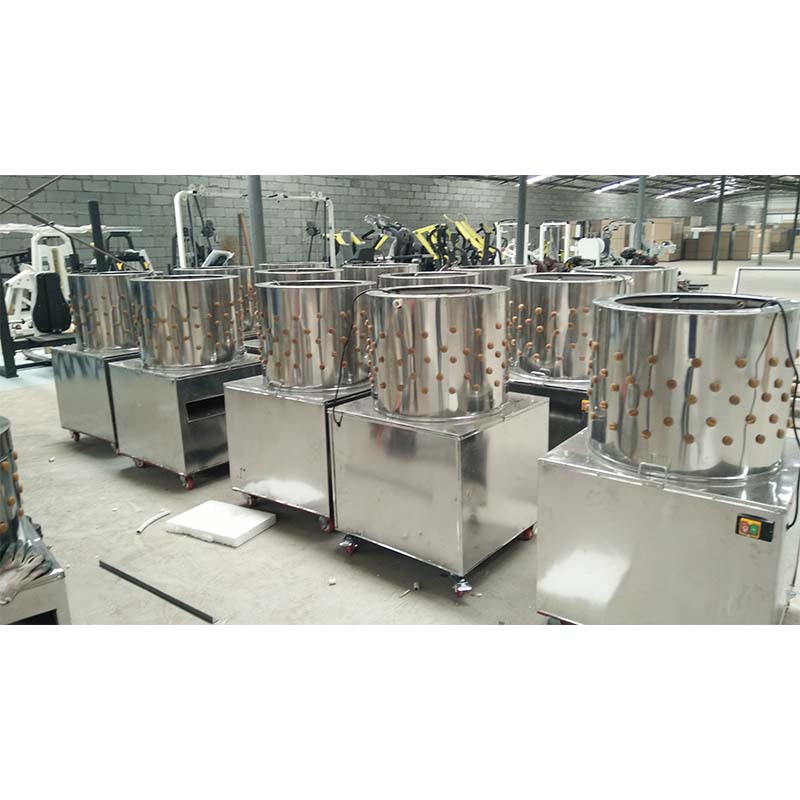Understanding the Importance of Proper Scalding Tank Maintenance and Operation
Dec . 03, 2024 14:43 Back to list
Understanding the Importance of Proper Scalding Tank Maintenance and Operation
Understanding Scalding Tanks Importance, Applications, and Safety Measures
Scalding tanks play a crucial role in various industries, particularly in food processing and poultry handling. Their primary function is to prepare animals for processing by loosening feathers and skin, ultimately ensuring a more efficient and hygienic processing procedure. This article will delve into the importance of scalding tanks, their applications, and the necessary safety measures that must be taken when using them.
What is a Scalding Tank?
A scalding tank is a large container designed to hold water at high temperatures, typically between 140°F and 160°F (60°C to 71°C). These tanks are used to submerge poultry after they have been slaughtered. The hot water helps to loosen feathers, making the plucking process easier and more effective. Essentially, the scalding process prepares the bird for further processing and enhances product quality.
Applications of Scalding Tanks
The primary applications of scalding tanks are found within the poultry processing industry. When chickens, ducks, or other poultry are processed, they are often scalded immediately after slaughter. This process has multiple benefits
1. Efficiency Scalding significantly reduces the time required for feather removal, thus increasing overall processing efficiency. 2. Hygiene By scalding the birds, the risk of contamination is lowered. The hot water helps to kill surface bacteria, ensuring a safer final product for consumers. 3. Quality Proper scalding helps maintain the quality of the meat. If done correctly, it prevents potential damages to the skin and muscle of the poultry, ensuring that the product remains appealing to consumers.
Beyond poultry, scalding tanks are also used in some specialized applications within the meat processing industry for products like pigs and rabbits
.Safety Measures for Using Scalding Tanks
scalding tank

While scalding tanks are an invaluable tool in food processing, it’s essential to prioritize safety. The following measures should be implemented to ensure a safe working environment
1. Temperature Control Regularly monitor and control the temperature of the water. Too high a temperature can cause burns or injuries to workers and affect quality, while too low may not effectively loosen the feathers.
2. Protective Gear Workers should be equipped with appropriate protective gear, such as gloves, aprons, and face shields, to protect against hot water splashes.
3. Training Staff training is crucial. Workers must be educated on the proper operation of scalding tanks, the importance of temperature control, and emergency procedures in case of accidents.
4. Maintenance Regular maintenance of scalding tanks is necessary to prevent malfunctions. Inspecting for leaks, ensuring heating elements are functioning correctly, and cleaning the tanks to prevent contamination are vital steps.
5. Emergency Protocol Establishing clear emergency protocols and ensuring easy access to first aid kits can help manage any incidents effectively.
Conclusion
Scalding tanks are essential in the poultry processing industry, facilitating efficient, hygienic, and high-quality meat production. Understanding their significance, applications, and the safety measures associated with their use is critical for anyone involved in food processing. By adhering to safety protocols and maintaining equipment, workers can ensure a safe working environment while delivering high-quality products to consumers. As the food industry continues to evolve, the role of scalding tanks will remain pivotal, underscoring the importance of innovation and safety in food processing.
-
Hot Sale 24 & 18 Door Rabbit Cages - Premium Breeding Solutions
NewsJul.25,2025
-
Automatic Feeding Line System Pan Feeder Nipple Drinker - Anping County Yize Metal Products Co., Ltd.
NewsJul.21,2025
-
Automatic Feeding Line System Pan Feeder Nipple Drinker - Anping County Yize Metal Products Co., Ltd.
NewsJul.21,2025
-
Automatic Feeding Line System - Anping Yize | Precision & Nipple
NewsJul.21,2025
-
Automatic Feeding Line System - Anping Yize | Precision & Nipple
NewsJul.21,2025
-
Automatic Feeding Line System-Anping County Yize Metal Products Co., Ltd.|Efficient Feed Distribution&Customized Animal Farming Solutions
NewsJul.21,2025






